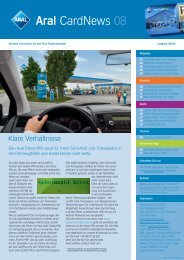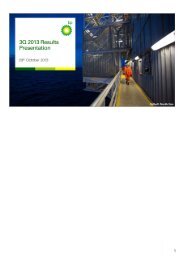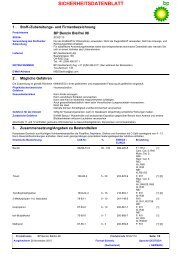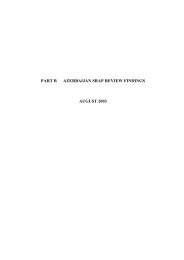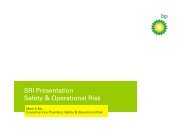Don Field Decommissioning Programme (pdf, 7.8MB) null - BP
Don Field Decommissioning Programme (pdf, 7.8MB) null - BP
Don Field Decommissioning Programme (pdf, 7.8MB) null - BP
Create successful ePaper yourself
Turn your PDF publications into a flip-book with our unique Google optimized e-Paper software.
<strong>Don</strong> <strong>Field</strong> <strong>Decommissioning</strong> <strong>Programme</strong>DON-<strong>BP</strong>-001For the full recovery option, seabed sediments along the entire route of the umbilicalswould be disturbed, but the short-term disturbance would be less than for the trenchor bury options. The vessels would use fuels and produce combustion gases, andtransportation on land to recycling sites would use fuel and produce combustion gases.Long-term Environmental ImpactsIn the leave in situ and selective recovery options, umbilical degradation will occurexternally due to prolonged exposure to seawater. The degradation rates for the variousumbilical materials were not extensively researched but are anticipated to be less thanthat for carbon steel pipelines. Degradation of each layer/sheathing of the umbilicals willoccur, allowing seawater to degrade the internal and external surfaces simultaneously,so accelerating the degradation process. The predicted life of the umbilical is in excessof 400 years.Fuel would be used, and combustion gases released, during periodic inspections andpotential remedial activities.In the full recovery option, the seabed would be left clear of potential obstructions.No other long-term environmental impacts have been identified.6.6.5 Societal Impacts on Other Users of the SeaIf all the umbilicals were fully recovered, there would be no safety risk to other users ofthe sea and a very small area of seabed would once again be available forfishing operations.When left in situ the umbilicals pose a potential snagging hazard, which represents asafety risk for the commercial fishing industry. However, it has been shown that theindividual risk to fishermen from this source is extremely small [10.3], due to the extentand depth of burial.The seabed along the routes is stable and it is unlikely that a trawl-board would interactwith either line. This will be confirmed by a trawler sweep of the lines on completion ofdecommissioning. Periodic surveys will then be conducted to confirm that adequateburial depths are maintained.There is a significant cost difference between leave in situ and total removal. However,there is more work and risk associated with the removal option, and this is reflected inthe costs. It is also reflected in the safety risks where the removal option results in asafety exposure to personnel that is greater than that for the other two options.The partial removal option has a small cost penalty but significantly reduces the fishingsnagging hazard.6.6.6 Cost AssessmentSome of the decommissioning cost components would be shared between theumbilicals and pipelines, ie management, detailed engineering, studies etc. The costshave been compiled on the basis that pipelines and umbilicals will be decommissionedat the same time and are therefore included in the pipelines assessment (refer toParagraph 5.6.6).PipelinesMay 2011 10-39




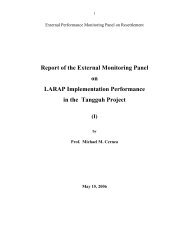
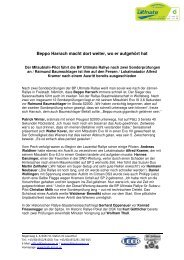
![[PDF] Deepwater Horizon: Accident Investigation Report - BP](https://img.yumpu.com/51697031/1/190x245/pdf-deepwater-horizon-accident-investigation-report-bp.jpg?quality=85)

